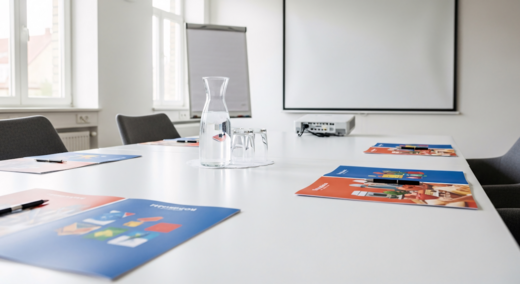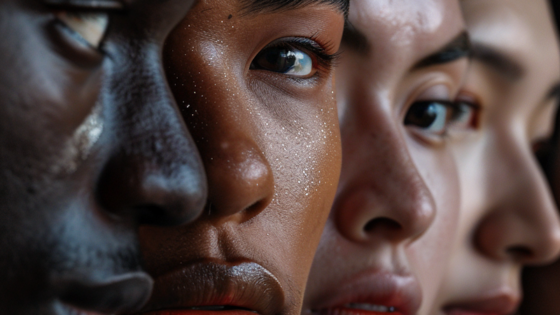BY W. GIFFORD- JONES MD & DIANA GIFFORD-JONES
An effective vaccine against the coronavirus may be the only way to end the pandemic. Wouldn’t we all love a return to social normalcy and easier sleep? But until scientists deliver a vaccine, or until the virus runs its course and goes away, we need to use other measures. Among them, medical authorities should be sharing more information with the public about natural ways to build up immunity against viral infections.
Vitamin D is one of the crucial components of your immune system. Many people are deficient in it. Perhaps because there are no headlines about it, some people don’t seem to care. A report in the Irish Medical Journal says it’s vital to have the right amount of vitamin D to achieve its full benefits. So, what’s the scientific evidence?
Dr. Declan Byrne, Clinical Senior Lecturer, St James Hospital and School of Medicine, Trinity College, Dublin, says, “Our findings call for an immediate supplementation of all hospital inpatients, nursing home residents and older Irish adults with vitamin D.” He adds, “Our findings also suggest that vitamin D supplementation in the broader adult population and frontline workers will help to limit infections and flatten out the coronavirus curve.”
Indonesian researchers added fuel with a study analyzing 780 patients who tested positive for the coronavirus. Among those patients determined as vitamin D deficient, 98.8% died!
So, the concern that a deficiency of vitamin D is associated with an increased risk of developing coronavirus is gaining global attention. For instance, Professor Ian Brighthope, an Australian nutritional guru who pioneered the importance of vitamin supplements for decades, says, “We know that a safe and effective vaccine may be a long way off. So, it seems madness that in the meantime we do not use all the defences such as vitamin D which is safe and cost effective.” The cost per person would be from $10 to $20 dollars a year.
But how many people are lacking in vitamin D? A survey from Trinity College, Dublin, says one in eight people under fifty years of age are deficient in vitamin D. In North America, it’s estimated that two in five people are deficient in vitamin D particularly in the late winter months, which doubles their risk of flu. And according to the National Institutes of Health in the U.S., 81.1% of black American adults are deficient in vitamin D.
Professor Adrian Martineau, an expert on immunity at Queen Mary University of London, says, “Vitamin D helps the body to fight viral respiratory infections. It boosts the ability of cells to kill viruses and at the same time dampens down harmful inflammation which is one of the big problems of coronavirus.”
Several years ago, this column published an interesting finding. It reported that 80% of elderly mentally ill patients, who had pneumonia, and were treated with vitamin D survived. Those that did not, died. This scientific proof should have rung a big bell.
So how can we get smart and boost our immunity? It’s a great tragedy that we continue to hear Medical Officers of Health, infectious disease experts and TV anchors promote the use of face masks, hand-washing, and social distancing to decease the risk of developing COVID-19, but none mention that vitamins D and C could help simmer down this pandemic.
Faced with an economic crisis unlike any ever faced before, a global prescription for a combination package of supplements would be prudent. It’s been suggested that 1,000 milligrams of vitamin C, taken in three divided doses has proven to increase immunity. Now its advisable to add 5,000 I.U. (international units) of vitamin D daily for two weeks to quickly establish an effective blood level of D. Then 3,000 IU daily. This is a great insurance package to fight viral infections.
As always, check with your own doctor.
Stay in the loop with exclusive news, stories, and insights—delivered straight to your inbox. No fluff, just real content that matters. Sign up today!
The truth About Carpal Tunnel Syndrome
Dr. W. Gifford-Jones, MD is a graduate of the University of Toronto and the Harvard Medical School. He trained in general surgery at Strong Memorial Hospital, University of Rochester, Montreal General Hospital, McGill University and in Gynecology at Harvard. His storied medical career began as a general practitioner, ship’s surgeon, and hotel doctor. For more than 40 years, he specialized in gynecology, devoting his practice to the formative issues of women’s health. In 1975, he launched his weekly medical column that has been published by national and local Canadian and U.S. newspapers. Today, the readership remains over seven million. His advice contains a solid dose of common sense and he never sits on the fence with controversial issues. He is the author of nine books including, “The Healthy Barmaid”, his autobiography “You’re Going To Do What?”, “What I Learned as a Medical Journalist”, and “90+ How I Got There!” Many years ago, he was successful in a fight to legalize heroin to help ease the pain of terminal cancer patients. His foundation at that time donated $500,000 to establish the Gifford-Jones Professorship in Pain Control and Palliative Care at the University of Toronto Medical School. At 93 years of age he rappelled from the top of Toronto’s City Hall (30 stories) to raise funds for children with a life-threatening disease through the Make-a-Wish Foundation. Diana Gifford-Jones, the daughter of W. Gifford-Jones, MD, Diana has extensive global experience in health and healthcare policy. Diana is Special Advisor with The Aga Khan University, which operates 2 quaternary care hospitals and numerous secondary hospitals, medical centres, pharmacies, and laboratories in South Asia and Africa. She worked for ten years in the Human Development sectors at the World Bank, including health policy and economics, nutrition, and population health. For over a decade at The Conference Board of Canada, she managed four health-related executive networks, including the Roundtable on Socio-Economic Determinants of Health, the Centre for Chronic Disease Prevention and Management, the Canadian Centre for Environmental Health, and the Centre for Health System Design and Management. Her master’s degree in public policy at Harvard University’s Kennedy School of Government included coursework at Harvard Medical School. She is also a graduate of Wellesley College. She has extensive experience with Canadian universities, including at Carleton University, where she was the Executive Director of the Global Academy. She lived and worked in Japan for four years and speaks Japanese fluently. Diana has the designation as a certified Chartered Director from The Directors College, a joint venture of The Conference Board of Canada and McMaster University. She has recently published a book on the natural health philosophy of W. Gifford-Jones, called No Nonsense Health – Naturally!












